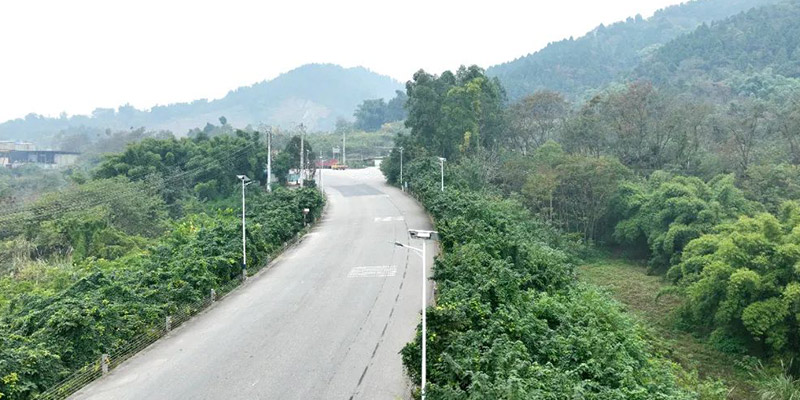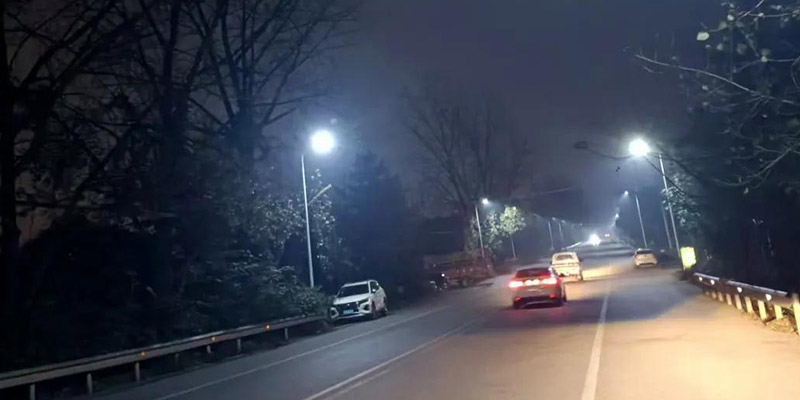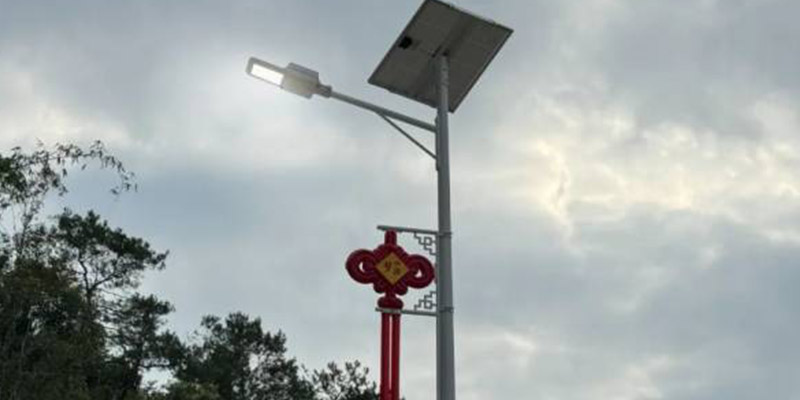With over 5,000 solar street light manufacturers worldwide, procurement platforms are flooded with advertisements touting “low-cost bestsellers” and “year-round warranties.” Yet many buyers have fallen into these traps:
A municipal project using low-cost lights saw 20% of LEDs fail within 3 months, with battery capacity halved after 6 months—resulting in rework costs exceeding the original purchase price by 30%.
An overseas project faced customs detention due to the manufacturer's lack of local certification, missing delivery deadlines and incurring a $120,000 penalty.
In reality, selecting solar street lights isn't just about “picking a lamp”—it's about “finding a partner who solves long-term problems.” Quality manufacturers can reduce your after-sales costs by over 50%, ensure first-time project acceptance, and even become a “plus point” for your future projects.
Next, we'll break down the “6 Hard Standards for Evaluating Quality Manufacturers,” paired with real-world case studies across municipal, rural, and overseas scenarios, helping you avoid 90% of procurement pitfalls.
Many buyers prioritize comparing “LED power” and “battery capacity” while overlooking the manufacturer's capabilities—yet it's precisely the manufacturer that determines a product's “hidden value” and “risk costs.”
Cost Risk: Hidden Expenses Behind Low Prices
An African rural project purchased 1,000 low-cost streetlights at 10% below market price. Within six months, 30% required replacement, incurring $12,000 in additional repair and shipping costs—resulting in a 25% higher total cost than premium products.
Safety Risk: Poor Craftsmanship = Hidden Hazards
Streetlights without overload protection may leak electricity during heavy rains; lamp posts made of thin steel (wall thickness <2.5mm) are prone to breaking during typhoons. In a southern city, a substandard lamp post collapsed, damaging roadside vehicles, yet the manufacturer refused to take responsibility.
Project Risk: Certification Gap = Delivery Failure
European projects require CE certification, U.S. projects demand DLC certification, and Nigerian projects necessitate SONCAP certification. Failure to provide these may result in customs detention, missed project deadlines leading to penalties, and even damage to corporate reputation.

Peace of Mind: Full-Process “Backstop” Eliminates Need for Micromanagement
From “Project Design” (e.g., calculating light spacing based on road width) to “Installation Guidance” (providing video + illustrated tutorials) to “After-Sales Response” (24-hour callback, 48-hour repair plan overseas), premium manufacturers handle the entire process.
Added Value: Customization + Extended Warranty Extend Product Lifecycle
High-altitude regions require “cold-resistant batteries,” while coastal areas need “salt-fog resistant poles.” Premium manufacturers tailor solutions to specific needs rather than offering “one-size-fits-all” products. Crucially, they confidently offer a “5-year warranty on core components,” extending product lifespan from 3 years to 8-10 years.
Not all “self-proclaimed premium” manufacturers are reliable. Use these six criteria to “verify authenticity”—each with actionable verification methods to avoid being misled by “verbal promises.”
Criterion 1: R&D Capability — Assess “In-House Labs + Patent Portfolio”
R&D capability determines whether a manufacturer can solve “special scenario problems” (e.g., winter endurance in northern regions, insufficient sunlight in high-latitude areas). Three verification methods:
Check Labs: Request photos/videos of “luminous efficiency test chambers” and “high/low-temperature cycling chambers.”
Legitimate manufacturers have in-house labs capable of simulating extreme temperatures (-30°C to +70°C) and heavy rain conditions to test lamp endurance and waterproofing. Companies without labs rely solely on “assembling purchased components” and cannot address specialized requirements.
Count Patents: At least 10+ utility model patents
Focus on patents related to product performance, such as “high-efficiency heat dissipation structures” or “smart charge/discharge chips,” rather than “design patents.” For example, a premium manufacturer holds 15 patents, including “Low-Temperature Battery Activation Technology” enabling streetlights to operate normally at -25°C.
Ask the R&D Team: Do they have engineers with over 5 years of experience?
When discussing project requirements, assess whether engineers can quickly propose solutions (e.g., “What battery capacity is needed for 7 consecutive rainy days?”) rather than merely stating “Our product is excellent.”
Criterion 2: Product Quality — Evaluate “Core Component Specifications + Full Inspection Process”
Product quality isn't “subjective” but proven through concrete parameters and testing protocols:
(1) Core components must meet these hard metrics (require manufacturers to provide written specifications)
| part | High quality standards | inferior trap |
| lamp beads | Epistar/Sanan chip, luminous efficiency ≥180lm/W, Ra ≥80 | Unbranded chip, luminous efficiency <150lm/W, poor color rendering (difficult to see the road at night) |
| Battery | Lithium iron phosphate battery, cycle life ≥ 2000 times, temperature resistance - 20℃ ~ + 60℃ |
Lead-acid batteries (short life, cannot be used at low temperatures), no temperature resistance parameters |
| Light pole | Q235/Q355 steel, wall thickness ≥3mm, hot-dip galvanized + plastic sprayed (salt spray test ≥1000 hours) |
Thin steel (wall thickness < 2.5mm), no salt spray test (prone to rust in coastal areas) |
(2) Must implement “100% pre-shipment inspection”
Sampling inspections may overlook defective products. Quality manufacturers conduct three tests on each streetlight:
72-hour continuous illumination test (verifying endurance);
Simulated heavy rain test (IP67/IP68 waterproof rating);
20 cycles of high/low temperature testing (-20°C to +60°C switching, assessing component stability).
Require submission of “Inspection Reports” containing each streetlight's serial number.
Standard 3: Project Experience — Evaluate “Implementation in Similar Scenarios”
Manufacturers with “similar project experience” better understand requirements. Verify via two methods:
Find “matching scenario” case studies
Municipal arterial road projects: Select suppliers with “5km+ supply” cases (proving stable production capacity and quality control);
Overseas projects: Select suppliers with “target market cases” (e.g., for African projects, choose suppliers with Nigeria/Kenya cases demonstrating customs clearance expertise).
Demand “Tangible Evidence,” Not “Verbal Claims”
Require “On-site photos/videos,” “Customer feedback letters,” or even “Contact existing clients for verification.” Reject companies boasting “numerous large projects” yet unable to provide proof.

Standard 4: Service System — Evaluate “Pre-sales + After-sales + Warranty”
Service directly impacts project efficiency and maintenance costs:
Pre-sales: Provide “free design solutions”
e.g., calculate “33 x 60W streetlights needed per 1km rural road (1 light every 30m)” to prevent “over-provisioning waste” or “under-provisioning failures.”
After-sales: Response speed + localized support
Domestic: Response ≤2 hours, on-site repair within 48 hours;
Overseas: Utilize “localized service partners” (e.g., Southeast Asia, Africa) with stocked spare parts to prevent “one-month repair delays.”
Warranty: Core components ≥5-year warranty
Overall warranty ≥3 years; core components (LED chips, batteries, controllers) ≥5-year warranty with “free part replacement + labor coverage” during warranty period. We reject companies offering “year-round warranty” but limiting coverage to “non-human damage” and requiring customers to cover shipping costs.
Standard 6: Certification Qualifications — Look for “Domestic + International Dual Certification”
Certification is the “passport” for products entering the market, requiring:
Domestic Projects: CQC, GB/T certification
Mandatory for municipal project acceptance; projects without certification will be rejected outright;
International Projects: Select certifications based on target markets
Europe (CE, RoHS), USA (DLC, UL), Africa (SONCAP, SABS);
Bonus Points: ISO9001, ISO14001 certifications
Demonstrate standardized production processes and robust quality control systems.
Understand “how premium manufacturers solve practical problems” through concrete scenario examples.
Case 1: Rural Lighting Project — Installation in 100 Administrative Villages of a Provincial Region
Project Requirements
Limited budget necessitates “high cost-effectiveness + easy installation” (rural electricians can operate independently);
Remote village locations require prompt after-sales support (avoiding week-long delays for repairs).
Manufacturer Solution
Cost Optimization: Provided “60W Simplified Streetlights” (omitting remote control functionality while retaining core lighting + waterproofing), reducing costs by 15%;
Simplified Installation: Provided “illustrated + video guides” clearly labeling “tool specifications and screw quantities,” enabling rural electricians to install one unit in 30 minutes;
Localized After-Sales: Established 2 service points within the province, committing to “on-site service within 48 hours,” and provided free training for 5 rural electricians to handle routine minor issues.
Project Outcomes
Installation efficiency increased by 40%, completing 100 villages in 20 days;
Failure rate remained below 3% within 2 years, earning “Outstanding Supplier” recognition from local government and recommendation for neighboring provincial projects.

Case 2: Overseas Island Project — Maldives Resort Streetlights
Project Requirements
Salt fog resistance (high salt content in sea breeze), typhoon resistance (maximum wind force 12);
Compliance with “Maldives Environmental Certification” and customs clearance assistance;
English-language after-sales communication with rapid spare parts delivery (resort cannot experience power outages).
Manufacturer Solution
Customized corrosion-resistant products: Teflon-coated lamp poles, battery compartments with “dual sealant,” salt spray test endurance: 2000 hours;
Certification & Customs: Environmental certification documents prepared 30 days in advance; coordinated with local customs agents for clearance within 15 days;
After-Sales Support: Common spare parts (LED bulbs, controllers) stocked in Sri Lanka; 24/7 English response; parts delivered within 3 days.
Project Outcomes
Zero failures in 3 years; resort expansion led to additional purchase of 200 units;
Referred to 3 neighboring resorts, all resulting in successful collaborations.
Beyond “superior products and service,” premium manufacturers deliver additional value:
Cost Optimization: 10%-15% savings compared to intermediaries
Premium manufacturers with core component production lines (e.g., self-produced batteries, LED chips) bypass intermediaries to offer “factory prices,” saving $20,000-$30,000 on 1,000 streetlights.
Policy Alignment: Subsidy Application Support
Many regions offer subsidies for “solar lighting projects.” Manufacturers provide “product specifications and case studies” to boost subsidy approval rates (e.g., a rural project secured 30% subsidy using their materials).
Long-Term Support: Lifetime Maintenance + Trade-In Program
Regularly distribute “maintenance guides” (e.g., “Wipe solar panels every 3 months to boost charging efficiency by 20%”); offer “trade-in discounts” after 5 years of product use to reduce long-term investment.
When selecting solar streetlight manufacturers, the core criterion is “problem-solving capability”—only those who can handle “product customization, certification/clearance, and after-sales maintenance” qualify as long-term partners.
If you're searching for a manufacturer, start with these 2 steps:
Request the “Same-Scenario Case Data Package”: For rural projects, obtain “rural lighting case parameters, customer feedback, and on-site videos” to intuitively assess compatibility.
Click “Contact Us” to receive a customized solution within 1 hour—whether for domestic municipal/rural projects or overseas ventures, we provide “sample testing + free design proposals” to ensure your project succeeds on the first try.